The Revolutionary Guards: An Introduction
The Islamic Revolutionary Guard Corps (IRGC) is the Islamic Republic of Iran’s most important institution. The military-security institution commands huge influence in every aspect of Iranian public life, from culture and the environment to the economy, politics and judicial process. Whatever the field or area, the IRGC is not required to report to anybody and is answerable to no one.
The IRGC was created early after the 1979 Islamic Revolution by the order of the founder of the Islamic Republic, Ayatollah Ruhollah Khomeini. Its declared mission was to safeguard the revolution and its accomplishments. As the years have gone by, it has expanded its sphere of activities. The entities under its control have multiplied to such a degree that it now operates effectively as a parallel government. It interferes in all current affairs of the country and it aims to have control over every aspect of the way Iran is run.
In a series of reports, IranWire presents a detailed portrait of this powerful and mysterious institution and, for the first time, identifies and explains all bodies, institutions and other entities operating under the umbrella of the Revolutionary Guards, at the same time outlining its activities through an infographic and an interactive diagram.
The infographic is a visual representation of the Guards’ organizational structure and presents all institutions under the control of IRGC in one map. It resembles a family tree, a portrait of the IRGC with all its children, grandchildren and great-grandchildren — a dramatic picture of power in Iran today.
In the interactive diagram, the viewer is able to use the mouse to see how various entities under the control of the Guards emerged, and how they are connected — exactly like a family tree.
IranWire has aimed for this series and the overall project to be informative and a solid research tool. But it is not perfect, and there will always be room for updates, enhancements and further information. We welcome your views, ideas and knowledge, so please do get in touch.
***
The IRGC Intelligence Protection Organization - Internal Affairs (Sazman-e Hefazat-e Etela’at-e Sepah)
Although the IRGC statute does not mention this organization at all, according to Article 8 of the Ministry of Intelligence statute, the IRGC Intelligence Protection Organization is a centralized and independent organization. The head of the organization is chosen from one of the supreme leader’s trustees who is appointed by the chief commander of the IRGC. The hiring and firing of the head requires the supreme leader’s approval. All other high-ranking officials in the organization also need the approval of the supreme leader’s representative in the IRGC. The head of the organization is also a member of the Supreme Council of the IRGC.
The organization began its operations in 1983. It is an internal affairs agency that is responsible for the security and monitoring of the IRGC’s actions and staff. It is considered a superior security agency within the IRGC’s security structure. The current head of the IRGC Intelligence Protection Organization is Brigadier General Mohammad Kazemi. Prior to him, the heads were: Qolam-Hussein Ramezani (2006-2009), Morteza Rezaei (1993-2006), Ali Saedi (1989-1993), Ahmad Vahidi (1987-1989), (1983-1987), and Mohammad-Hussein Nejat (1982-1983).
The IRGC Intelligence Organization (Sazman-e Etela’at-e Sepah)
According to Article 14 of the IRGC statute, “the Intelligence Unit’s (Vahed-e Etela’at) duties and responsibilities will be determined by its own statute ratified by the Islamic Consultative Assembly (Majlis).” Although the statute does not provide any details, the Intelligence Unit began its work in 1979. At first, its name was “the Intelligence and Investigation Unit” (Vahed-e Etela’at va Tahqiqat) and it was involved in recruitment for the IRGC as well as identifying and prosecuting suspected anti-Revolutionary elements. In the same year, the name was changed to “the Intelligence Office” (Edar-e Etela’at) and focused more on intelligence and security work. The Islamic Consultative Assembly (Majlis) never ratified a specific bill for this organization, but Article 8 of the Ministry of Intelligence statute mentions the duties of the IRGC Intelligence Organization. They include: acquiring military information, coordination with the Ministry of Intelligence before executing operations as a law enforcement body, and transmitting crucial intelligence data and updates to the Ministry.
According to the same law, the head of the organization is a member of the Coordinating Council of Intelligence Executive Affairs (Shoray-e Hamahangi-e Omoo-e Ejraie-e Etela’at). According to Article 5 of the Ministry of Intelligence statute, the IRGC Intelligence Organization must follow the lead of the Ministry in its operations. It should only be involved in collecting evidence, building cases, and identifying the Revolution’s opposition “until receiving the green light from the Ministry of Intelligence” for any operations.
Iran went through political turmoil in 1982 and 1983 during which time there were several bombings and assassinations that killed dozens of high-ranking Iranian officials. On September 23, 1984, Ayatollah Ruhollah Khomeini, the supreme leader at the time, ordered the majority of the IRGC’s intelligence assets to be transferred to the Ministry of Intelligence, which had been established in August of the same year. Yet, in the following years, and especially after the end of the Iran-Iraq War in 1988, the IRGC’s intelligence operations became more prominent and were eventually turned into the Intelligence Division. In 2009, the division transformed into the IRGC Intelligence Organization.
There are not many publicly available details on the four main subunits of this organization, which include the chief deputy’s office, psychological warfare operations, the cyber commander’s office, and the operations division. Also, according to news published on the Saham News website in November 2014, there is another subunit called “the Efficiency Office.” The office has many safe houses, which operate as parallel entities working against government ministries by monitoring their activities and sabotaging their operations. The safe houses operate clandestinely, usually as cultural, media, or scientific institutes.
According to the amendment of Article 3 of the Criminal Procedure Code, ratified in the parliament on June 14, 2015, the organization is a law enforcement agency for the judiciary branch.
Since 2009, Hussein Taeb has been the head of the organization. Previously, Taeb was the head of the Basij organization and was believed to be involved in the active suppression of the 2009 post-election unrest, and in particular attacks on student dormitories.
The IRGC Intelligence Protection Organization (Sazman-e Hefazat-e Sepah)
The organization’s duty is the safety and security of important strategic targets such as government buildings, national events, high-ranking Iranian officials, diplomats and international guests, airlines and airports and terminals. Currently, Brigadier General Ali Nasiri is the head of the organization.
It has three subsidiary units: Vali-e Amr (The Supreme Leader) Corps, the Ansar-al-Mahdi Corps (Followers of Imam Mahdi) and the Aviation Protection Unit.
Ansar-al-Mahdi Protection Unit
The Ansar-al-Mahdi Protection Unit is responsible for the safety of high-ranking officials (with the exception of the supreme leader) inside and outside the country, and the protection of important state and religious buildings. This unit was established on Ayatollah Ruhollah Khomeini’s order in 1979, in which he said: “the IRGC is responsible for protecting the life and guaranteeing the safety of the prominent figures of the regime, even if [they] themselves refuse it. It shall also monitor suspicious activities in the country.” Despite this specific order, the high-ranking officials of the regime can still ask the police force to guard them instead of the IRGC. The police force usually oversees the protection of the middle-ranking officials of the IRI. The Supreme Council of National Security determines the number of designated bodyguards for each official.
Aviation Protection Organization (Sepah-e Hefazat-e Havapeimaei)
The Aviation Protection Organization was established on December 26, 1984, by the order of Ayatollah Ruhollah Khomeini, and emphasized the importance of the presence of the IRGC in airports and on airplanes to guarantee the safety of flights and prevent any airplane hijackings. Second Brigadier General Safar-Ali Mousavi has been the head of the organization since 2014. The organization has units in 63 airports across Iran and works with 15 airlines.
The Supreme Leader’s Protection Corps (Sazman-e Sepah-e Vali-e Amr)
The Supreme Leader’s Protection Corps is the advanced unit for protecting the leader. In the first decade after the Revolution, this unit was based in Ayatollah Ruhollah Khomeini’s office. After 1988, the unit was officially formed and acted more like an organization with its hierarchical structure. The first members of the corps were chosen from the best-trained IRGC soldiers with war and guerilla warfare experience.
During the era of Ayatollah Khamenei, all contact between his office and the unit has been through Asghar Hejazi, who is a high-ranking member of the supreme leader’s office staff. The corps initially had four main units, two of them were the airline protection unit and the unit for guarding important figures, which turned into separate organizations. Protecting the supreme leader became the sole duty of the unit. The corps is estimated to consist of 12,000 soldiers. Since 2010, the commander of the unit has been Brigadier General Ebrahim Jabari. Prior to him, Mohammad-Hussein Nejat commanded the force from 2000 to 2010. Ali Masjedian and Khosrow Oruj have also commanded this corps in the past.
IRGC Cyber Defense Command (Farmandehi-e Padafand-e Cyberi)
The IRGC Cyber Defense Command was established in 2014. It is the IRGC’s cyber intelligence organization. Its missions include monitoring and prosecuting organized cybercrimes, terrorism, espionage, and fighting against online destruction of cultural and social values, tracking insult or defamation of revolutionary values, upgrading users’ security in cyberspace, and producing content. The IRGC’s Center for Investigating Organized Cybercrimes, and Gerdab (Whirlpool) website are two units in this organization.
The IRGC Center for Investigating Organized Cybercrimes was established in 2007 and is also known as the “cyber army.” The cyber army has been involved in various famous cyber operations, including “Mozellin” (Deceivers) which tracked and shut down pornographic websites in Iran, as well as operations which tracked and suppressed cyber political dissidents such as “Mersad,” “Woodpecker,” and “Deep Sedition.” These operations resulted in the arrest of dozens of cyber activists and web administrators.
The IRGC Cyber Defense Command has also been involved in some joint projects with Kheibar Cyber Headquarters, the IRGC Imam Hussein University, and Mersad and Nasr Companies - which are involved in hacking. Kheibar is a joint project between the Ministries of Intelligence and Defense, and the IRGC intelligence agencies.
The Commander in Chief of the Armed Forces
The Chief Commander of the IRGC
The Supreme Leader’s Representative in the IRGC
The IRGC Security and Intelligence Agencies
The IRGC's Social, Cultural, Scientific and Educational Institutions
The IRGC Commercial and Financial Institutions-(Khatam-al-Anbiya Construction Headquarters)
The IRGC Commercial and Financial Institutions-(Bonyad-e Ta’avon-e Sepah)
The Organization for the Mobilization of the Oppressed
The Basij Cooperative Foundation
Cyberspace Institutions and The Physical Training Organization of the Basij
Basij Headquarters and Military Organizations
Basij Social and Cultural Organizations




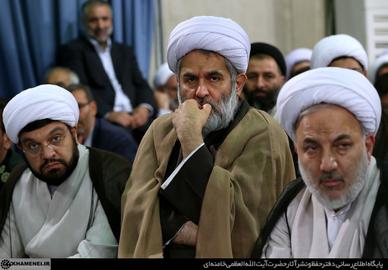
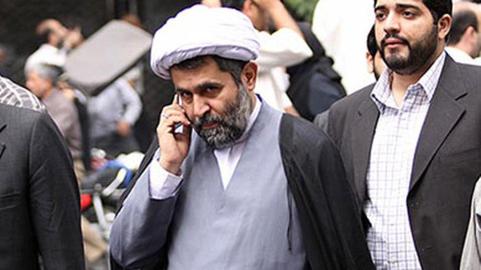
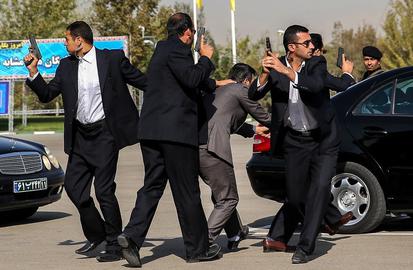
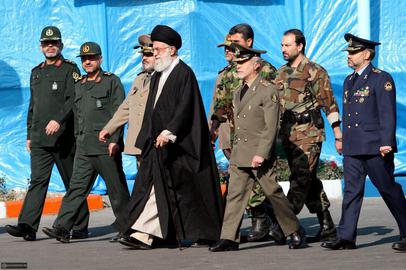













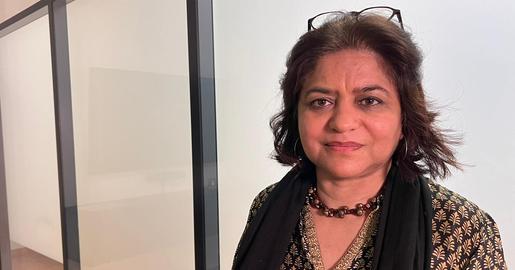





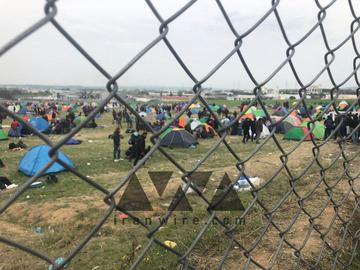
comments